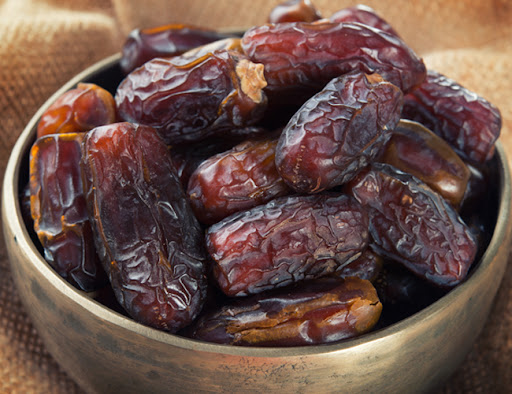Kurma Supplier Malaysia: Traditional Storage Methods

Introduction
As a kurma supplier Malaysia, preserving the quality and freshness of dates is essential to meet the demands of consumers. While modern storage techniques have their advantages, traditional methods of date storage have been used for centuries and are still relevant today. In this blog post, we will explore some traditional methods of date storage that can help kurma suppliers in Malaysia maintain the integrity of their products and extend their shelf life.
1. Sun Drying
Sun drying is a traditional method of preserving dates that harnesses the natural power of the sun to remove moisture from the fruit. After harvesting, the dates are carefully laid out in a single layer on mats or trays, exposing them to direct sunlight. This process takes advantage of the intense heat and warmth of the sun, which causes the water content in the dates to gradually evaporate. As the moisture evaporates, the dates become progressively drier and denser in texture. The prolonged exposure to sunlight not only removes excess moisture but also concentrates the natural sugars in the dates, resulting in a richer and more pronounced flavor. Sun drying is particularly effective in hot and arid regions like Malaysia, where there is an abundance of sunlight. However, it requires careful monitoring and attention to weather conditions to prevent over-drying or exposure to rain and humidity, which can compromise the quality of the dates. Despite these challenges, sun drying remains a popular and time-tested method of date preservation, appreciated for its ability to extend the shelf life of dates while enhancing their taste and nutritional value.
2. Air Drying
Air drying is a traditional method of preserving dates that relies on natural air circulation to remove moisture from the fruit. After harvesting, the dates are typically hung or strung together in well-ventilated areas. This allows air to freely circulate around the dates, facilitating the gradual evaporation of moisture. Unlike sun drying, air drying is a slower and more controlled process, making it suitable for regions with higher humidity or when precise drying conditions are desired. The gentle airflow helps maintain the texture and flavor of the dates while extending their shelf life.
Air drying offers several advantages in terms of preserving the quality of dates. The gradual drying process allows the dates to retain their natural sweetness and chewy texture, creating a desirable eating experience. It also helps prevent the growth of mold or fungus that can occur in moist environments. Proper ventilation is crucial to ensure even drying and prevent any moisture pockets that could lead to spoilage.
One of the benefits of air drying is its versatility in different climates and environments. It can be implemented both indoors and outdoors, as long as there is sufficient airflow and a suitable drying area. In regions with higher humidity, air drying provides a more controlled and manageable drying process, reducing the risk of over-drying or loss of flavor.
While air drying may take longer compared to other preservation methods, it offers a natural and gentle approach to preserving dates. By allowing the dates to dry slowly, the flavor and nutritional profile of the fruit are preserved, resulting in a product that retains its natural goodness. Air drying is a traditional method that has stood the test of time, maintaining the integrity of dates and ensuring that they can be enjoyed for an extended period.
3. Storage in Palm Leaf Baskets
Storage in palm leaf baskets is a traditional method commonly used in Malaysia and other palm-growing regions. After the dates are dried, they are carefully arranged in palm leaf baskets, which provide good airflow and allow any residual moisture to escape. The baskets are then stored in a cool and dry place, away from direct sunlight. The palm leaf material acts as a natural moisture absorber, helping to maintain the quality and prevent the dates from sticking together. This method also allows for easy inspection and removal of any spoiled or damaged dates, ensuring only the best quality dates reach consumers.
4. Storing in Earthenware Jars
Storing dates in earthenware jars is another traditional method that provides a favorable environment for preserving their freshness. The porous nature of the earthenware allows for natural air circulation, preventing moisture buildup and maintaining the dates’ texture. The jars are typically sealed with lids or cloth covers to protect the dates from dust and insects. This method is effective in maintaining the quality of dates over an extended period, as the earthenware helps regulate temperature and humidity, creating an ideal storage environment.
Conclusion
As a kurma supplier Malaysia, preserving the freshness and quality of dates is paramount. While modern storage techniques have their advantages, traditional methods of date storage can still play a significant role in maintaining the integrity of dates. Sun drying, air drying, storage in palm leaf baskets, and storing in earthenware jars are time-tested methods that allow for proper moisture control and protection against external factors. By employing these traditional storage methods, kurma supplier Malaysia can ensure that their dates retain their flavor, texture, and nutritional value, meeting the expectations of consumers who appreciate the authenticity and traditional methods of preservation.
Key Highlights
– Sun drying and air drying are traditional methods of date storage that involve moisture removal through exposure to sunlight or air circulation.
– Storage in palm leaf baskets allows for natural airflow and prevents moisture buildup.
– Storing dates in earthenware jars provides an ideal environment for maintaining freshness and quality.
– Traditional storage methods preserve the flavor, texture, and nutritional value of dates.
– Employing traditional storage techniques can appeal to consumers who appreciate authenticity and traditional preservation methods.